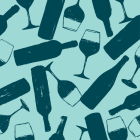Sotheby’s takes fine wine auctions to France
International auction house Sotheby’s is expanding into France this autumn with plans to conduct sales from new locations in Beaune and Bordeaux.
Jamie Ritchie, worldwide head of Sotheby’s Wine, said the move was long overdue, especially considering more than 85% of the value of the wines sold by Sotheby’s comes from France.
“We anticipate France becoming one of our most important markets, providing sellers in Continental Europe with the greatest access to the global market, and buyers from all around the world will have more ability to buy rare bottles,” he said.
He added: “We believe it is important to have the property for these auctions located in Beaune and Bordeaux, the two most important centres for trading wine in Europe, so we are able to offer collectors a comprehensive range of services.”
Champagne prepares for ‘classical’ vintage
Growers in Champagne are celebrating what is set to be a high-acid, ‘classical’ vintage this year, following a run of unusually warm growing seasons.
Speaking to Harpers, Charles Philipponnat, director of the eponymous Champagne house, said: “After a difficult season, we’re somewhat reassured: yields are higher than expected, and the grapes are quite ripe, with crisp acidity.”
However, some areas have fared worse than others, with Philipponnat noting that grey rot and botrytis mould was a problem in some districts, and that Pinot Meunier proved the most challenging of the region’s three key varieties.
Meanwhile, Krug’s chef de cave Julie Cavil said it has “been a challenging year for everyone,” but the house will still create a new Edition of Krug Grande Cuvee in 2021, “as we have done every year since 1842”.
Haut-Brion owners expand Right Bank ambition
Domaine Clarence Dillon (DCD), the family firm that owns Chateau Haut Brion and La Mission Haut Brion, has acquired St.-Emilion Grand Cru Classe Chateau Grand-Pontet, furthering its plans to establish itself on the Right Bank.
The deal, as reported by Wine Spectator, adds nearly 37 acres to DCD’s Quintus property, which was established in 2011 when DCD purchased and renamed Chateau Tertre Daugay, followed by neighbouring Chateau L’Arrosee in 2013.
Speaking to Wine Spectator, DCD chair Prince Robert de Luxembourg said the deal – the value of which has not been disclosed – will “produce one of the largest of the great growths of Saint Emilion”.
De Luxembourg is confident of the terroir’s potential. "I've tasted the wines historically and in recent vintages and been quite impressed. The wines have been good. But they weren't making the kind of selection we do. I think we can put the best parcels into Quintus," he said.
Top Bordeaux barons to stand trial for rigging Grand Cru rankings
Two of Bordeaux’s leading wine figures are facing up to five years in prison for manipulating the rankings of their wines within the Saint Emilion classification system in order to push prices up.
Hubert de Bouard, owner of Chateau Angelus, and Philippe Casteja, owner of Chateau Trotte Vieille, stand accused of allegedly rigging entry to the St Emilion classification system, and their rankings within it, in order to unfairly inflate the price of their wines which are classed as Grand Cru Classe A and B status respectively.
The prosecution argues that as influential members of France’s governing wine body, INAO, the men were unfairly able to ensure that their own domains maintained their ranking or joined the classification. If found guilty, Bouard and Casteja could each face jail time, plus a fine of up to €500,000.
The case – which has been ongoing since INAO published its new classification for Saint Emilion in 2012 – was bought by the owners of three other chateaus who are reportedly unhappy that their own vintages failed to obtain classification.
The outcome of the trail could have significant implications for the whole wine region. As the Telegraph reports, the plaintiff’s lawyer Eric Morain said: “We are going to talk about a system that doesn’t tell the consumer that the tasting note only counts for 30% in the ranking.” He added that the rest is based on the fame and notoriety of the chateau, among other criteria, and that it is a “system that sells brands and no longer grapes”.






